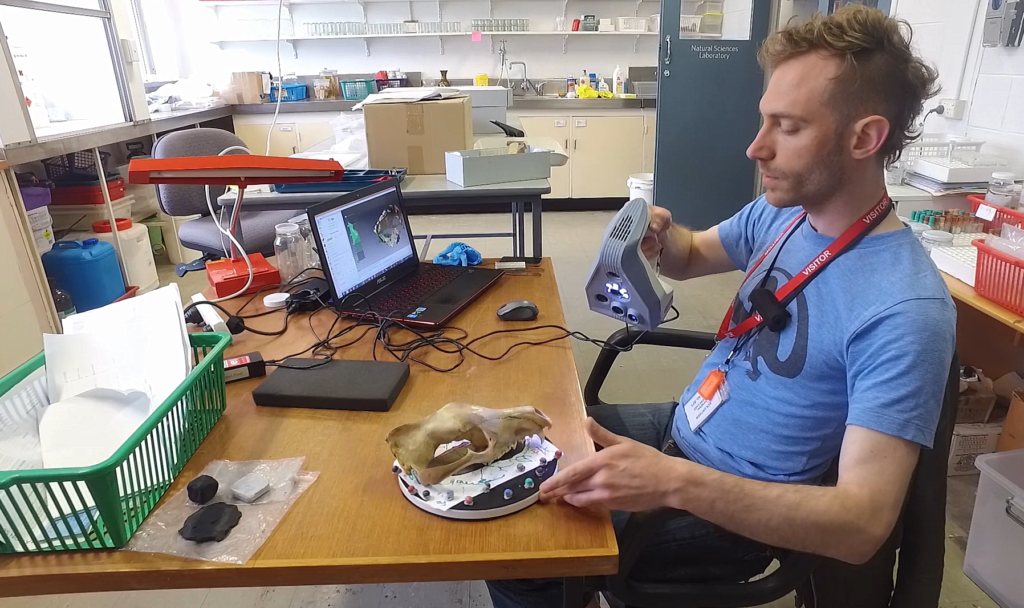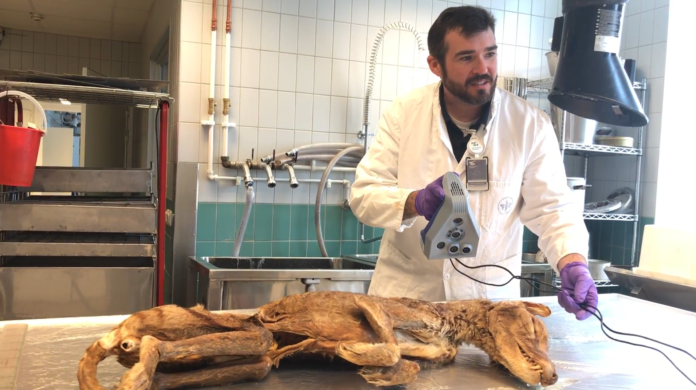Millions of years of evolution had transformed thylacine, more commonly known as the “Tasmanian tiger”, into a survival specialist. The arrival of the first settlers led to the disappearance of the largest existing carnivorous marsupial. From the early 1830s and over the next century, thousands of thylacines were deliberately exterminated by farmers and hunters as part of a vast reward programme. Until there was only one left.
The last known thylacine was captured in the wild and spent the last three years of its life in a zoo cage. At the time, researchers failed to study it thoroughly. Missing information include the thylacine’s diet, its breeding habits, hunting habits, how it moves, its interactions with its environment, and even its weight.
The weight of the Tasmanian tiger
Over the decades of thylacine research, several scientists have raised attention on the lack of an accurate estimate of the animal’s body mass. One oft-quoted estimate is that thylacins weigh between 25 and 29 kilograms.
Another characteristic of thylacine that needed to be determined was whether or not it was an exception to the so-called “carnivore diet costs” principle. This is essentially an energy threshold describing how carnivores of about 14 kg or lighter tend, out of necessity, to feed on prey smaller than themselves. Carnivores weighing between 14 and 21 kg, such as foxes and feral cats, generally concentrate on smaller prey, but may occasionally attack heavier animals. Carnivores weighing around 21 kg or heavier, such as wolves and jaguars, usually attack prey of the same or larger size.
Aware of this crucial lack of information, Douglass Rovinsky, a doctoral student at the University of Melbourne, and his team have been trying to unravel this mystery.
Details of the project were published in the scientific journal Proceedings of the Royal Society B, under the title ‘’Did thylacine violate the cost principle of the carnivorous diet? Body mass and sexual dimorphism of the Australian marsupial emblematic.’’
Dr Rovinsky explains the importance of the project: “The more we know about thylacine, or any other extinct animal, the better we can understand how animals still alive today will respond to environmental changes that are occurring at an alarming rate globally and locally.’’
The use of 3D scanning in the analysis of Tasmanian tigers

In order to digitise thylacins and analyse their body mass, the team used 3D technologies, including a portable Artec 3D scanner.
The two researchers visited museums and institutions separately and scanned hundreds of specimens: bones, skulls, complete skeletons, stuffed thylacins, as well as a fully preserved thylacine.
Traditional methods have been discarded as they involve constantly handling and resting specimens, which may damage them. The Artec Space Spider 3D scanner, which allows data acquisition accurate to 0.05 mm and is dozens of times faster than other methods, and Artec Leo, which has an integrated touch screen and is 100% wireless, were used.
Subsequently, the scans were processed in the Artec Studio software.
“The tracking is incredible and allows the user to move around the objects and easily scan any surface. Of course, the absence of cables and the integrated screen make the entire scanning process much simpler and more efficient” explains Dr. Rovinsky.
Once all the data from the body mass calculations (from 207 scans of 93 thylacins) were gathered, Dr. Rovinsky and his team determined that the true thylacin weight was approximately 19 kg for males and 14 kg for females. The males were 30% larger than the females.
Estimates of the body mass of male and female thylacins are about 55% lower than assumptions made several decades ago. It was therefore clear that thylacine was not an exception to the principle of “carnivore diet costs” as it belonged to the category of carnivores weighing between 14 and 21 kg, which generally feed on smaller creatures but may occasionally prey on larger prey.
This successfully completed project is part of a wider research into the evolutionary biology of thylacine, which includes the current study of its body mass and extends to further research into its diet, locomotion, and overall biology using 3D data samples collected from around the world.
“Palaeontologists are finally realising that the methods attractive to 3D technologies systematically provide a much more accurate estimate of body mass. They represent the future in research” concludes Dr. Rovinsky.
Remember, you can post job opportunities in the AM Industry on 3D ADEPT Media free of charge or look for a job via our job board. Make sure to follow us on our social networks and subscribe to our weekly newsletter : Facebook, Twitter, LinkedIn & Instagram ! If you want to be featured in the next issue of our digital magazine or if you hear a story that needs to be heard, make sure to send it to contact@3dadept.com






